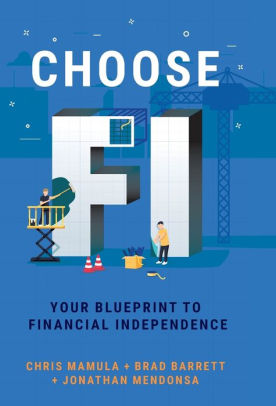DIY Investing: How Simple is Too Simple?
Recently, I have presented two resources for DIY investors, Jim Collins “Stock Series” and John Bogle’s “The Little Book of Common Sense Investing.” Together they will allow you to build foundational knowledge of passive index investing. Let’s review the basic concepts. Both authors state that investing should be simple. AGREED! Both say that you should focus on low costs and tax-efficiency, allowing you to keep more of your money. AGREED! Both love (and Bogle actually started) Vanguard. AGREED! Both will tell you that paying for investment advice adds guaranteed cost with no reasonable expectation for improved investment returns. STRONGLY AGREED! Both feel that you really need only one mutual fund that tracks the U.S. stock market to hold your entire equity investment portfolio. HMMMM! Not so sure about that one. History suggests that we have a good chance at better performance with less risk by adding a slight bit of complexity to our portfolio without losing sight of all of the other principles outlined above.
If you have read the resources shared in these two posts, you know by now that the biggest mistake most investors make is allowing the emotions of fear and greed to drive them to make costly mistakes while completely ignoring the cyclical nature of markets. They chase hot performing investments and pay premium prices, often after investments have had their best days. They flee investments when they are tanking, just as they are becoming a good value.
Prior to investing, you need to fully understand your investment options, develop a plan and follow it. This will eliminate these costly emotional errors that occur when changing course at just the wrong time. You should therefore look for the weaknesses in your plan (all plans have them). Are you comfortable enough with your plan to stick with it through good times and bad? We feel that the biggest weakness to the plan of traditional index investing (as described by Collins and Bogle) is a lack of diversification. Simplifying things is certainly beneficial, but does this philosophy oversimplify? Before committing to this strategy, here are some questions we feel you should ask yourself.
- If you own a widely diversified index fund such as the Vanguard Total Stock Market Index Fund, VTSAX, as recommended in JL Collins “Simple Path” are you truly diversified? Collins would say that this is the only fund that you need because with this fund you own shares of every publicly traded stock in the USA at rock bottom prices. This is technically absolutely true, but it gives the impression that your portfolio would work something like this.

Daddy EE = Large Stocks, Toddler EE = Small Stocks, Sled = Portfolio In reality it would work something more like this.

Large Stocks Determine Fund Performance, Little Stocks along for the ride. This analysis comes straight from Bogle’s “Little Book”. He states that 80% of the value of the total stock market index is held in the 500 largest companies, while the other 4,500+ companies account for only 20% of the value. Therefore, the fate of the biggest U.S. companies over the course of your lifetime will, for the most part, determine the fate of your portfolio if you only own this one fund. Is this good or bad? Historically, there have been periods when small stocks have been much better than large stocks and periods when they have been much worse. We don’t know the answer to which companies will perform better in the future. The key is understanding this and then deciding if you want more diversification or if you are comfortable betting on the large companies and sticking with whichever strategy you choose for the long-term.
- What about the rest of the world? Index fund investing is about not trying to pick winners and losers. It is about buying and holding a share in every publicly traded company. If you believe in this philosophy why would you own Ford and GM but not Toyota and BMW? Why own Exxon-Mobile but not BP? Why own Apple and Microsoft but not Samsung?
- Does international investing add unnecessary cost? Collins and Bogle would say that it does. This is again technically true. But compare the Vanguard Total Stock Market Index (VTSAX) with an expense ratio of .05% to the Vanguard Total International Stock Index Fund (VTIAX) at .14%. If you simply split them evenly, your all in expenses would be <.1% of your portfolio annually which is still negligible on long-term performance.
- Does international investing add unnecessary risk? Collins and Bogle would say that it does as investment returns are effected by the value of the U.S. dollar in relation to the foreign currency. But this neglects the fact that risk and opportunity are opposite sides of the same coin. The value of the U.S. dollar constantly fluctuates, in either direction, against the value of foreign currencies. While the idea that this adds investment risk is correct, it also adds opportunity as another way to increase your investment returns.
- Do you understand recency bias? You may look at the recent returns of the S&P 500 fund with a one year return of 14.18% and wonder why you would want to invest in anything else. Small stocks returned only 7.39% last year and international funds -4.17%. To understand this concept, consider the 33.46% return of real estate funds (REITS) for last year. If you know what the top performing investment for any time period will be, there is no point in diversifying at all. You should just put all of your money there. The fact is that we never know what will perform best for the next month or year let alone over the remainder of your investing lifetime. The point of diversification is not shooting for an optimum portfolio, it is to give yourself a good chance to have success in many circumstances.
- When making investment decisions, do you consider scale and life stage? It is reasonable to expect that at times the U.S. stock market will lose 40% of its value in a year. If you have $10,000 this means that your portfolio value would decrease by $4,000. This actually represents a great opportunity to buy shares “on sale” and you can easily buy your way right through this downturn. If you have $100,000 you would lose $40,000 in this same event. Does that make you nervous? Would you stay the course? What if you were approaching $1M and ready to retire and the same event cost you $400,000. What would you do? How would you handle it? The amount of money you are investing and your stage in life has a huge impact on what your risk management strategies should be. As much as we love the idea of simplicity offered by simple index investing, there simply is never a one-size-fits-all solution for everyone.
This post represents a lot of things to think about. Don’t worry if you don’t fully understand these things or know what to do about them right now. The next few posts will give you a few more resources to introduce the concepts of modern portfolio theory which tries to answer many of these questions. The important thing is that you know what questions to ask so that you can develop an investment plan appropriate for you rather than rushing into a strategy that you do not fully understand, only to then bail on it at exactly the wrong time.
In our opinion a simple index investing strategy is far superior to the vast majority of investing approaches out there. However, there is a point where you can oversimplify things and leave substantial returns on the table while taking unnecessary risk with your investments. As with most things in life, the truth lies somewhere in the middle. Before committing large amounts of your money be sure to ask yourself: How simple is too simple?
Are you sold on the principles of index investing or do you think there is a better approach? Do you favor the simplicity of traditional indexing (owning just a single S&P 500 or total market index fund) or do you favor greater diversity? What do you do? Share your thoughts and ideas in the comments below.
*Thanks for reading. If you enjoyed this content, you can find my current writing at Can I Retire Yet?. Enter your email below to join our mailing list and be alerted when new content is published.

Top recommendations
Mr. EE,
I just found your site through JL Collins’ site. I just wanted to let you know that I have thoroughly enjoyed reading your previous posts and I look forward to your future posts. I have followed you on feedly to make sure I don’t miss a thing. Thank you for writing in such an accessible and understandable manner.
Thank you!
Thanks for the kind comments. I am excited to have new readers coming from JLCollins’ site since he linked our post as the intro to his “Stock Series”. He is both a great blogger and great guy. Please come back to the site and share your thoughts (good or bad) as I want to create an interactive site to help our readers gain a deeper understanding of these issues and the feedback really helps me to know what readers relate to and what content they benefit from.
Cheers!
EE
Fortune magazine once published an article stating that 25% of the S&P 500 eps was from foreign income via multinational companies. They furthermore stated this was a wise way to invest internationally since these companies had good tract records and were subject to GAAP rules whereas non US companies were not.
In essence, you have decent international diversification with a S&P 500 index fund. That should extend to the Total Stock Market Fund too.
Thanks for taking the time to comment.
I’ve heard this same argument and I think it has some validity. I also am aware of the theory that as our economy is becoming more global that correlations between US in international stocks will be higher, which decreases the value in holding the more expensive and risky international stocks.
I also know that there have been periods where the returns have been much better for international stocks and would greatly enhance portfolio returns versus not holding them. There have also been periods where you would benefit by the relative strength of foreign currencies compared to the US dollar.
I (and anyone else who is being at all honest) have no idea what the future holds and so all we can do is use our best judgements based on what has happened in the past and what we think the future looks like. I just want to present as much relevant information in as accessible way as possible to allow people to make an educated judgement for themselves one way or the other.
Thanks again for the comment and your input is welcome any time here.
EE I am very much looking forward to your coming posts on modern portfolio theory. Currently I have most of my IRA in VSMGX Vanguard Life Strategy Moderate Growth fund. This is 60/40 stocks/bonds, and about 2/3 US and 1/3 foreign allocation, all in one fund. I was in Betterment briefly early 2014, but switched to Vanguard because Betterment was 50 percent Foreign allocation. I thought the US would do way better than Europe due to our growing energy independence due to fracking. I was right in 2014, but now the Saudis have pushed energy prices so low the US has practically stopped drilling activities. So maybe 50/50 is a better US foreign allocation at the moment. My 60/40 stocks/ bonds mix is because I am retiring in 7 months and want a less volatile mix heading into retirement.
Kenneth,
I don’t know the exact quote, but William Bernstein says something to the effect of this. It is much more important to develop an asset allocation that you understand, are comfortable with and will stick with than it is trying to figure out an optimal asset allocation (which is impossible anyway and can only be known in retrospect!)
I hope you’ll continue reading b/c I think my future posts on this subject will be very helpful to you and others who have these types of questions. Unfortunately, I (and anyone else who is being honest) won’t be able to give you the specific answers you are looking for. Your portfolio is only one part of the equation in your (early?) retirement plan. We’ll expand on this greatly in future posts.
Thanks for the comments/questions.
Cheers!
EE